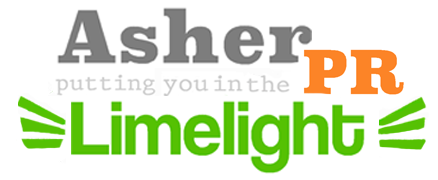What Is the Effective Interest Method of Amortization?

Interest expense is calculated as the effective-interest rate times the bond’s carrying value for each period. The amount of amortization is the difference between the cash paid for interest and the calculated amount of bond interest expense. Par value, in turn, is simply another term for the bond’s face value, or the stated value of the bond at the time of issuance. A bond with a par value of $1,000 and a coupon rate of 6% pays $60 in interest each year. Note that under the effective interest rate method the interest expense for each year is increasing as the book value of the bond increases. Under the straight-line method the interest expense remains at a constant amount even though the book value of the bond is increasing.

Understanding the tax implications of your bond investments is crucial for effective wealth management. Amortizable bond premiums refer to the portion of the premium paid by an investor for purchasing a bond that is deductible over the life of the bond. DebtBook also offers another acceptable form of the Effective Interest method that takes into account the callability of maturities. In the event a bond is a callable premium bond, there is a higher likelihood that the bond will be called before or at the call date. DebtBook’s Effective Interest Rate to Call method amortizes the premium on these maturities with that likelihood in mind. Since the sales proceeds ($936,815) is less than the bonds’ face value, the bonds were issued at a discount of $63,185.
Calculating Interest Expense, Amortization of Bond Discounts or Premiums, and Interest Payments
If the bond in the above example sells for $800, then the $60 interest payments it generates each year represent a higher percentage of the purchase price than the 6% coupon rate would indicate. Although both the par value and coupon rate are fixed when the effective interest rate method is used, the amortization of the bond premium at issuance, the bond pays a higher rate of interest from the investor’s perspective. Notice that under both methods of amortization, the book value at the time the bonds were issued ($104,100) moves toward the bond’s maturity value of $100,000.

Implementing wealth management strategies that involve diversification, tax efficiency, and interest rate risk management can optimize bond portfolios and enhance overall returns. As we amortize the premium/discount over the life of the bond, the book value is reduced back to its original par amount at the maturity date of the bond. The Effective Interest Rate method compares a bond’s Face Value Stated Interest to the bond’s Book Value Effective Interest, let’s walk through what each of these terms mean and how they are calculated using our Series information pictured below. PwC refers to the US member firm or one of its subsidiaries or affiliates, and may sometimes refer to the PwC network.
Effective Interest Method of Amortization FAQs
The effective interest method is used when evaluating the interest generated by a bond because it considers the impact of the bond purchase price rather than accounting only for par value. CPA examiners will ask a candidate to calculate the “unamortized bond premium or discount”. Note that this amount is referring to the amount of the bond premium/discount that is yet to be amortized. The constant yield method provides a more accurate reflection of the bond’s yield, while the straight-line method is simpler and easier to understand. Investors should consider their specific investment objectives and tax situation when choosing the appropriate method. By doing so, the investor can reduce their taxable income each year by deducting a portion of the bond premium as an amortized expense.
- In the following example, assume that the borrower acquired a five-year, $10,000 loan from a bank.
- The amount of amortization is the difference between the cash paid for interest and the calculated amount of bond interest expense.
- To calculate the amortizable bond premium using the constant yield method, multiply the bond’s adjusted cost basis by its effective interest rate and subtract the annual interest payment.
- Under the effective interest method, the semiannual interest expense is $6,508 in the first period and increases thereafter as the carrying value of the bond increases.
- Including bonds with varying coupon rates, maturities, and credit ratings can help investors achieve a balanced portfolio that takes advantage of amortizable bond premiums while managing interest rate risk.
- Assume that the final payment will be $2,774.99 in order to eliminate the potential rounding error of $1.06.
- The yield to maturity is the total return an investor can expect if they hold the bond until it matures.
This content is for general information purposes only, and should not be used as a substitute for consultation with professional advisors. Multiply the $100,000 by the 5% interest rate and $5,000 is the amount of interest you owe for year 1. Subtract the interest from the payment of $23,097.48 to find $18,097.48 is applied toward the principal ($100,000), leaving $81,902.52 as the ending balance. In year 2, $81,902.52 is charged 5% interest ($4,095.13), but the rest of the 23,097.48 payment goes toward the loan balance. Therefore, the interest rate is constant over the term of the bond, but the actual interest expense changes as the carrying value of the bond changes. Unlike the real interest rate, the effective interest rate does not take inflation into account.




Leave a Reply